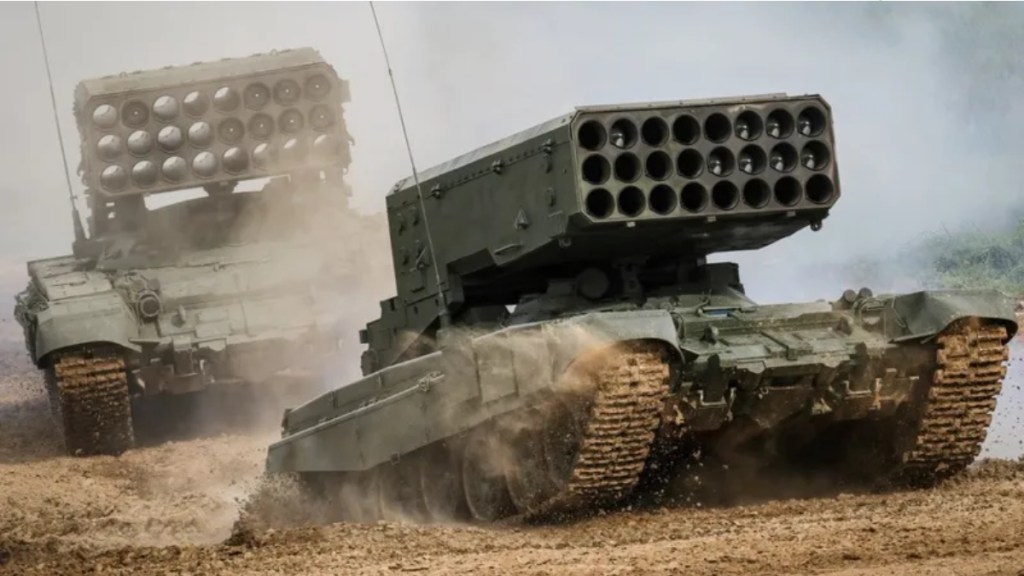Thermobaric weapons have gained significant attention due to their devastating effects in modern warfare. Although Russia is often associated with these powerful bombs, numerous countries, including the United States and China, have also invested in thermobaric technology. This article explores the development, deployment, and implications of thermobaric weapons.
Definition and Mechanism
Thermobaric weapons, often referred to as “vacuum bombs” or “enhanced blast weapons,” utilize atmospheric oxygen to amplify their explosive power. Unlike conventional explosives that combine fuel and oxidizer, thermobaric bombs release a fuel cloud that ignites, resulting in a high-temperature explosion. This explosion produces an immense blast wave followed by a rapid vacuum effect as oxygen is consumed.
Effects of Thermobaric Weapons
The combination of intense overpressure and the vacuum effect makes thermobaric weapons particularly destructive, especially in enclosed spaces such as bunkers and tunnels. The resulting shockwave can demolish structures, while the pressure differential can cause catastrophic injuries, including ruptured organs and lungs.
Early Development
The roots of thermobaric technology can be traced back to the United States during the Vietnam War in the 1960s, where the military sought effective methods to clear minefields. This led to the creation of fuel-air explosives (FAEs), which served as early models for modern thermobaric bombs. The CBU-55 and CBU-72 were among the first FAEs, demonstrating effectiveness in detonating hidden mines through overpressure explosions.
U.S. Military Applications
The U.S. refined its thermobaric capabilities over the decades, employing FAEs during Operation Desert Storm in 1991 to destroy Iraqi bunkers and minefields. The psychological and physical impacts of these weapons enhanced their reputation, leading to their incorporation into various military arsenals. The U.S. continues to maintain thermobaric-capable weapons, such as the AGM-114N Hellfire missile with a Metal Augmented Charge (MAC) warhead.
Russia’s Leadership in Thermobaric Technology
Russia has become a leader in the development and use of thermobaric weapons. From the Soviet Union’s initial developments in the late 20th century to their deployment in recent conflicts, these weapons have been integral to Russia’s military strategy. Notable systems include the TOS-1 multiple rocket launcher and ODAB-series bombs, designed to target fortifications and urban areas effectively.
Countries Developing Thermobaric Technology
The spread of thermobaric technology is not confined to Russia or the United States. Several nations, including China, North Korea, India, and Brazil, have developed thermobaric systems. China has created artillery rockets and infantry weapons, while North Korea reportedly possesses thermobaric artillery systems. Iran has also developed thermobaric weapons for use by its proxies, raising concerns about their deployment in unconventional warfare.
Ethical and Legal Implications
The use of thermobaric weapons has sparked significant ethical and legal debates. Critics argue that their devastating effects warrant classification as weapons of mass destruction, particularly in populated areas. Efforts to ban thermobaric weapons under the United Nations Convention on Certain Conventional Weapons in 1980 failed to gain adequate support.
Conclusion
Despite ethical concerns regarding their use, thermobaric weapons remain crucial components of military arsenals worldwide. Their effectiveness in destroying fortified targets makes them valuable assets in modern warfare, particularly in urban combat scenarios. The continued development and proliferation of these weapons indicate their enduring presence in global conflicts.
Multiple-Choice Questions (MCQs):
- What are thermobaric weapons often referred to as?
A) Nuclear bombs
B) Vacuum bombs
C) Chemical weapons
D) Conventional explosives
Answer: B) Vacuum bombs - What distinguishes thermobaric weapons from conventional explosives?
A) They are larger in size.
B) They require no fuel.
C) They release a fuel cloud that ignites.
D) They are less destructive.
Answer: C) They release a fuel cloud that ignites. - During which conflict did the U.S. first employ fuel-air explosives (FAEs)?
A) World War II
B) Vietnam War
C) Gulf War
D) Korean War
Answer: B) Vietnam War - Which country has developed the TOS-1 multiple rocket launcher system?
A) China
B) United States
C) Russia
D) India
Answer: C) Russia - What year did an effort to ban thermobaric weapons occur under the United Nations?
A) 1980
B) 1990
C) 2000
D) 2010
Answer: A) 1980
